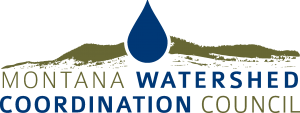
This project was funded by a Big Sky Watershed Corps Project Support grant from the MWCC Watershed Fund.
Project Description
Location: Cameron Creek in the Bitterroot River Watershed
This project is a continuation of several Bitterroot Water Partnership projects at Shining Mountain Ranch and will address sediment pollution, temperature increases, and the loss of riparian vegetation and habitat. This project was initiated in 2013 and updated in 2016. It has focused on a section of Cameron Creek that was identified as both high need and with a high potential for restoration by Montana Fish, Wildlife, and Parks in the original Cameron Creek project Revegetation Plan prepared by Geum Environmental Consulting, LLC. This project will directly address the sources of sediment and temperature pollution by reducing bankside erosion through using additional riparian vegetation to stabilize the bank. Currently, along with unplanted areas there are gaps alongside the creek where riparian vegetation failed to establish itself, and these areas allow sediment runoff and fail to provide shade and cool areas in the creek. The use of riparian vegetation will contribute to temperature reduction by providing shade for the stream and increasing cool groundwater recharge as detailed on pg 27 of the Bitterroot Watershed Restoration Plan.
The first task will focus on assessing current conditions along Cameron Creek including rates of successful past willow establishment and survival and identifying vegetation gaps. A GPS unit will be used to navigate to past project sites and mark bare spots. The second task of removing past project materials will allow previously restored areas to fully return to their natural state. The salvageable materials gathered will be re-used to protect newly added riparian vegetation, reducing the amount of new materials needed. Additional protection materials will ensure that all plants are protected if 100% of past materials cannot be salvaged. This task will also include manual removal of non-native species such as reed canarygrass, which have formed several areas of monoculture along the creek, to ensure that native plants are given an environment conducive to new planting. The BSWC member will be assisted by an experienced BWP field technician who will replace the departing Project Manager. The third task will address NPS pollution through the establishment of more riparian vegetation as described above. The project’s success will be evaluated in the fourth task and focus on plant survival rate, but will require further monitoring by the BWP. The BSWC member will also collect quotes and photos to publicize this project to the BWP’s audience and promote the host organization’s work.
Project Outcomes and Impacts
Project in progress
